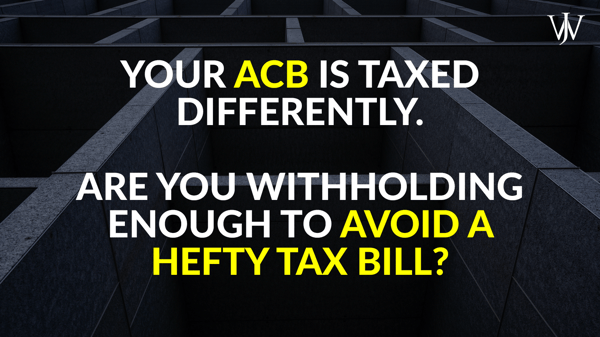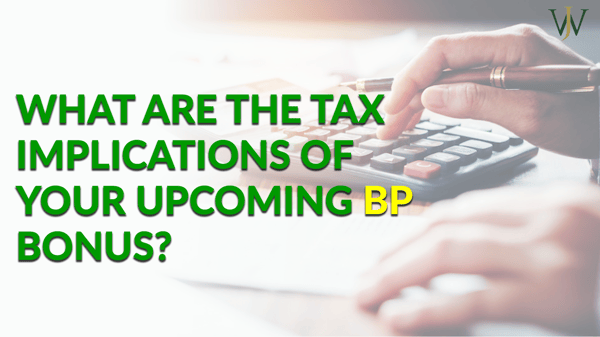Bonus time can be thrilling – having a large amount of cash on hand to fund expenses such as paying off debt, taking a vacation, or hiding it under the mattress for a rainy day. But for BP super-savers who want to maximize their bonus payout, there are many additional strategies to leverage this spring.
BP Annual Cash Bonus (ACB) Formula & Calculation Factors
BP bases an individual's ACB bonus on the employee's job grade with a target bonus, individual performance, and the company's annual performance. BP reviews many factors when determining company performance, based on performance and financial targets and BP’s performance within the industry. In those years in which BP's performance has been high, the bonus payouts have been higher. BP also awards spot bonuses for exceptional individual performance in managing or completing Company strategies.
In 2025, we anticipate a reduction in bonus payouts from BP compared to previous years. When we engage with BP employees, we explore strategies and opportunities for planning, including their bonus outcomes.
How is Your BP Bonus Taxed?
Receiving your bonus is an excellent time to revisit and look over your tax withholdings. To avoid making an estimated tax payment for Q1, it is essential to ensure that you are withholding enough in taxes from your paychecks and bonus. Dealing with an additional tax penalty on top of your tax bill come April 2025 is not something you want to be dealing with.

Bonus payouts are taxed differently than ordinary income because they are considered supplemental income. The IRS taxes supplemental income, like bonuses, up to $1 million at a flat withholding rate of 22%. As a high-income earner at BP, 22% withholding may not cover your tax bill without additional penalties. Therefore, working with a tax professional who can check in on your ongoing tax withholding and help you calculate any extra payments you may owe after you receive your bonus is crucial.
How the BP Bonus Impacts the BP RAP Pension
If you are gauging your pension as a factor in your retirement, you should consider how your next ACB payout may affect your pension calculation.
The BP RAP formula considers your years of service, age, and your annual compensation. If you are over 50 with 20 years of service at BP, you are credited with up to 11% of your eligible pay, including base pay and annual cash bonus (not spot bonus or other incentive pay). So, a major uptick in cash compensation can create a significant increase in the cash balance of your RAP Pension.
How to Invest Your BP Incentive Plan Payouts
A common question we often hear when talking to BP supersavers is, “Should I invest my bonus or save it in a certain account?” This answer is contingent on an individual’s unique circumstances and goals. The following strategies are discussed widely as ways to consider leveraging the ACB payout each spring.

Invest Excess Cash To Avoid Tax Drag From Inflation
To have a sound financial plan, holding some cash-on-hand is necessary for emergencies, but carrying too much cash can be detrimental to a plan. You need to earn 3.1% from investments to break even on the purchasing power of your cash. With the approaching ACB payout in March 2025, it would be well advised to review your cash holdings and determine if you should reinvest any funds, allowing growth to surpass inflation.
Make Contributions to Your BP 401(k)
Because the bonus payouts are in March, you should plan to check your 401(k) contributions before and after the bonus payout. If you know you will reach or exceed 2025's income limit of $350,000, you can consider contributing more to pre-tax with your ACB payout before you max out your ESP. Front-loading contributions with the ACB will ensure you max out your pre-tax, after-tax, and company contributions before reaching this $350,000 income limitation.
After the bonus payout, it's important to check your year-to-date ESP contributions percentages to not only max out your after-tax contributions but max out pre-tax contributions of $23,500 if you are under 50 or $31,000 if you're over 50. Factors including your salary and the amount of your ACB payout will vary your total after-tax contribution amount annually. Your total after-tax contribution amount is calculated by taking the difference between the overall 401(k) contribution limit, the sum of your pre-tax contributions, and your 7% company match.
For example, Sheri is a BP professional, age 54, whose base salary is $280,000 and whose target bonus is 40%. Figuring that she will fill out her pre-tax bucket and after-tax bucket over the full year, she decides to elect 18% of her base salary to defer into the 401(k), so she will contribute both the full pre-tax and the after-tax by December. However, Sheri’s bonus, even without any performance factor, will push her total compensation to almost $400,000. By October, when Sheri hits the compensation limit of $350,000, she can no longer contribute to the 401(k).
…But Don’t Over-Contribute to your 401(k)
After the bonus payout, you will want to check your year-to-date ESP contributions to determine if you are about to over-contribute. Due to BP’s 401(k) spillover provisions, your continued contribution, either pre-tax or after-tax, can push BP’s contribution to the plan into the Excess Benefit Plan (EBP). The EBP is a non-qualified plan with more stringent restrictions, which poses a challenge for financial planning.
For example, Trevor, age 51, has a compensation structure similar to Sheri (in the example above) - a $280,000 base with a 40% bonus target. He is well aware that he will top out on his compensation limit, so he sets his deferral to the 401(k) at $33% to max out his pre-tax and after-tax by well ahead of hitting the compensation $350,000 limit. He succeeds.
By April, he has contributed fully to the after-tax and the pre-tax. However, Trevor does not adjust his contribution because he does not know about the spillover provisions in the 401(k) plan. As such, he continues to make after-tax contributions and does not notice because he is busy with his job. Dollar for dollar, these contributions begin to “push out” the BP contribution to the 401(k) and into the Excess Benefit plan. While Trevor can still save quite a bit for retirement this way, pushing funds into the EBP isn’t optimal for long-term financial planning. The EBP has unique distribution rules he’ll need to plan around in the future, so keeping an eye on contributions before they spill over would be more optimal.
Leverage Backdoor Roth Contributions
There are several options available for where you can invest excess cash. For example, if you've maxed out your 401(k), you can contribute to an after-tax account or make a backdoor Roth contribution. With a backdoor Roth contribution, you can roll your excess cash over into a Roth IRA, where that money can grow tax-free in the long term, even if you’ve surpassed the income limits that prevent you from directly contributing to a Roth.
With backdoor Roth contributions, you can make a nondeductible IRA contribution of $7,000 if under 50 or $8,000 if over 50. After you have contributed to the IRA, you convert the IRA to a Roth IRA. When the funds are available in the Roth IRA, you can invest the cash in an equity-heavy allocation. Equity-heavy allocation can be a great solution to get cash working towards tax-free growth. Currently, there are no income limits on non-deductible IRA contributions, which means individuals over the income limit to contribute to a Roth IRA directly can still use this backdoor Roth strategy.
Reduce Taxable Income Through Charitable Giving
While a noteworthy bonus may bring delight, it can also result in a higher-than-average income year and a significantly higher tax bill. You can strategically pull a few levers while you're working to minimize your tax bill – max out pre-tax retirement savings accounts, deduct property taxes up to $10,000, deduct mortgage interest on up to $1m of debt, and deduct charitable donations.
Like many of our clients, you may be charitably inclined, and making a significant charitable gift in a high-income year can be incredibly beneficial to lowering your tax bill. Some options include - direct contributions to a charity or a Donor-Advised Fund (DAF) to bundle your charitable gifts into more significant lump-sum donations.
Advisor tip - To maximize the tax efficiency of your contribution, you can donate appreciated stock instead of cash.
In addition, gifting appreciated stock directly to a charity or a DAF offers you an itemized deduction on your tax return and avoids the capital gains taxes on the stock. With your cash ACB payout, you can replace the stock value with cash and either reinvest in the same stock or diversify elsewhere.

Make Your Investments Go Further by Working with a Financial Advisor
Bonus payouts are definitely something to be excited about, especially if BP has had a great performance year. However, it's important to anticipate the bonuses with strategies that maximize opportunities for you and your family. At Willis Johnson and Associates, we can help maximize your annual performance bonus for the journey ahead through tax planning, savings prioritization, and benefits eligibility assessment. Partnering with an advisor who understands your financial needs for today can add tremendous value in helping you establish financial systems to support your future goals. Get started today by discussing your financial goals and BP benefits with the advisors at WJA , who can offer tailored guidance to help you reach financial independence.







